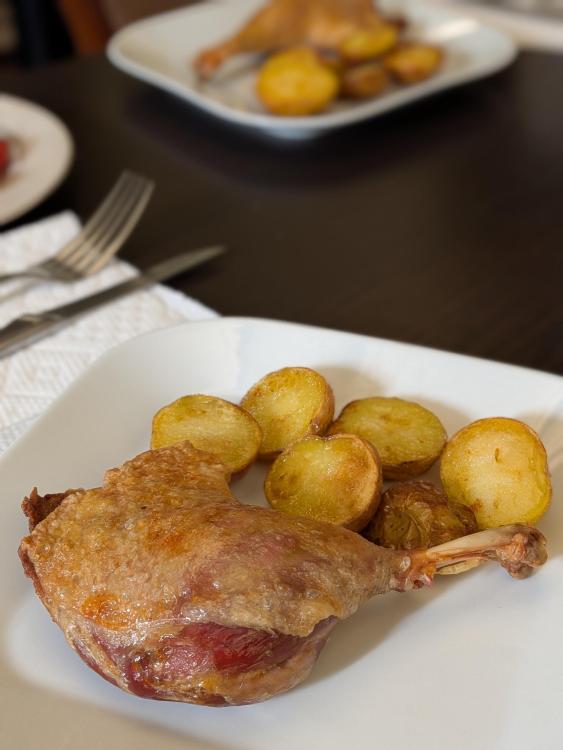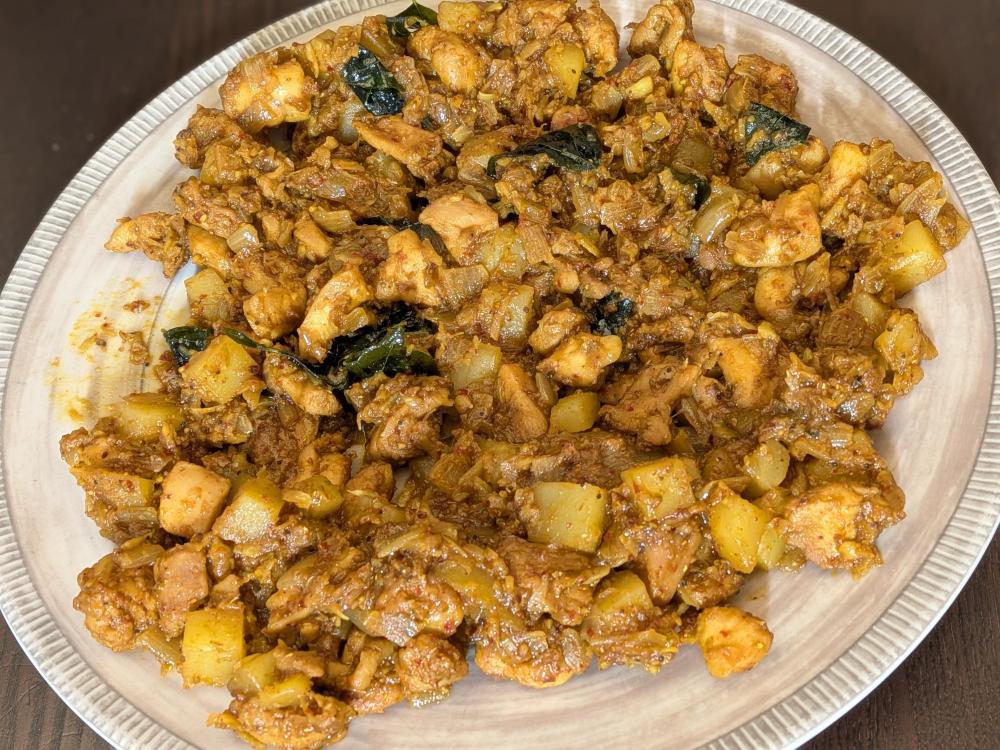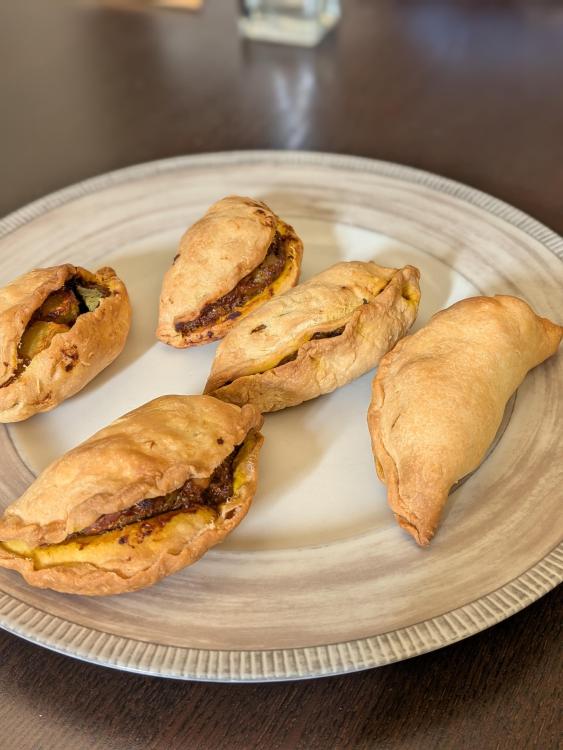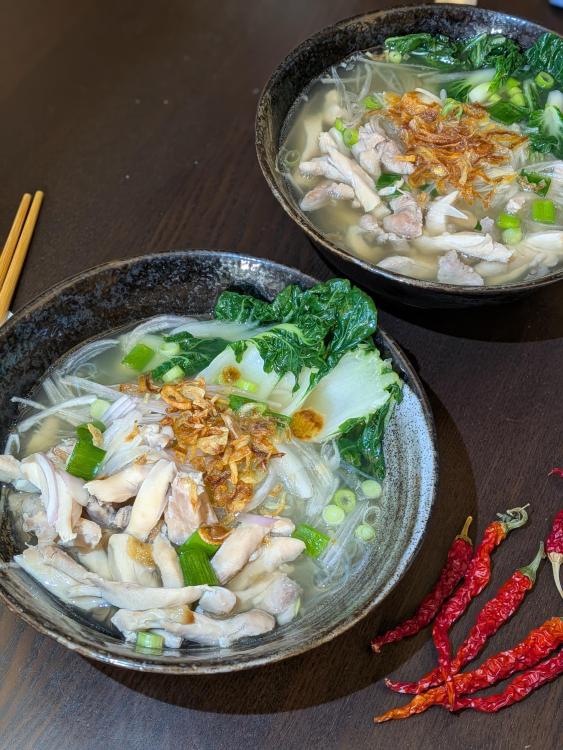
KennethT
participating member-
Posts
6,857 -
Joined
-
Last visited
About KennethT
- Currently Viewing Topic: What a mug!
Contact Methods
-
Website URL
http://
Profile Information
-
Location
New York, NY
Recent Profile Visitors
25,899 profile views
-
I love the combo of aged sherry vinegar, finely diced shallot, a little Dijon mustard and tarragon. When I was a kid, my parents used to take me to a french restaurant that did a ridiculous cherry sauce with duck....
-
Also check how fine the gradation is in the power settings. My cheap one is like 10% between each notch. My really good one is 1%. Also, look for those with continuously variable output as opposed to using a duty cycle. Duty cycle ones lead to scorching very easily even at 40% power. Continuously variable ones act much more like a gas burner.
-
The hebrew you included could be pronounced fetah - the letters there don't include the vowels. Also, the first character (on the right) is the "ph" phonic, rather than "p"... To be "p" it would have a dot in the middle. Regardless of how it's pronounced, I have no idea what Israeli feta tastes like! ha!
-
It definitely depends on the cook top. I have 2 standalone induction burners - one is a cheap Chinese one that beeps the second you lift the pot. I can't see any way to deactivate the beeping. The other is a professional one which is designed to be similar to gas, so you can saute, flip, etc, and not only won't it beep, but it will still provide energy to the pan (albeit diminished). I only use the cheap one as a way to boil a big pot of water fast.
-
Unfortunately not.... but thanks anyway.
-
Steam-bake duck legs on a rack at 275 for 1.5 hours. After 60 minutes, slip the potato halves under the rack. To finish, turn the CSO to convection bake at 400. For those with the air fryer function (hello, Canadian CSO-500), use the airfryer; 5-10 minutes. The skin was perfect, but the meat was a bit dry - but, I got the legs in Chinatown and they were very lean to start with.
-
I got a couple of duck legs in Chinatown this weekend with the intention of experimenting making betutu (from Bali). Unfortunately, dark forces intervened and I lost a day or so.... I didn't want to waste them so I just slow roasted them in the CSO with a short stint at 400° air fry... with duck fat potatoes.
-
This was a first attempt at making a Singapore/Malay curry puff - going for something like what can be found at the end of this post... Shot of the filling... overall, not bad, but I think it needs more potato - this recipe is about 2.5:1 chicken:potato... I also think it's slightly oversalted and I used too much of my homemade curry powder... It tasted a LOT stronger than I remembered. Here are some of the baked ones. They're typically fried but I didn't want to take up the time/effort since I wound up getting food poisoning this weekend which was after I made the dough and bought the rest of the ingredients. I didn't want to waste it all, but setting up the fryer seemed a bit too much effort. As you can see, I need a lot more practice folding over the scalloped edge. Also, the dough needs work... it was more crumbly and tender rather than flaky/tender... I don't know if that's due to the baking rather than frying or the dough recipe which is butter cut into flour and then cold water.
-
I've been trying to make the Singapore chicken curry puffs as seen here - scroll down to the bottom of this post. That dough was tender and flaky. I've spent the better part of a weekend researching curry puffs (karipap in Malay) and it seems that there are as many recipes for the dough as there are stars in the sky.... there's ones where butter is cut into the flour, oil is mixed with flour, smoking hot oil mixed with flour, and on and on... I tried the butter cutting into flour technique today, but it came out more tender and crumbly than flaky. Also, while most of these curry puffs are fried, they all say they can be baked at 350F (I used the air fryer function of my CSO) so I don't know if that affected the flakiness. Does anyone have any experience making these types of hand pies (not curry puffs necessarily but something with a similar shell) have any advice? I also checked out the eG Pie index that @gfron1 assembled a while ago but wasn't able to find anything that fit. Thank you!
-
I used to be a big proponent of Wild Fork but I haven't ordered from them in ages - I was sick of a lot of things coming in freezer burnt. Some of their items come vacuum packed, but a lot of it is in bulk bags - it's convenient to be able to only defrost 1 chicken thigh, but the last several times I ordered from them, I'd say over 80% of what was shipped bulk had some amount of freezer burn. Even the Argentine red shrimp.
-
Forget No complaints - I'm getting on a flight just for a chance at your leftovers!
-
I also wonder how it feels to move the pan around on it. Most times, unless it's a big pot of water, the pan doesn't just sit on the burner. My good induction burner still outputs power when the pan is raised an inch or two above the burner surface. My crappy one beeps incessantly in that condition.
-
Wow! This looks amazing - although I keep wondering how they vary the power level to the burner. Is it a continuous power output and varying levels or a duty cycle (alternating pulses of full power and no power). I have 2 standalone induction burners, one with the continually variable power output and one with a duty cycle, and unless you're heating a big pot full of water or oil, it's very obvious which one is which. I don't really have space for a drop in piece of equipment here with the layout of our cabinets; I really wish they made a single burner standalone version as well.
-
Not feeling so well this morning, and considering that I made chicken stock last night, we had Jewish/Vietnamese penicillin.... Mien ga... (Chillies are for decoration - they're drying on the table)




















